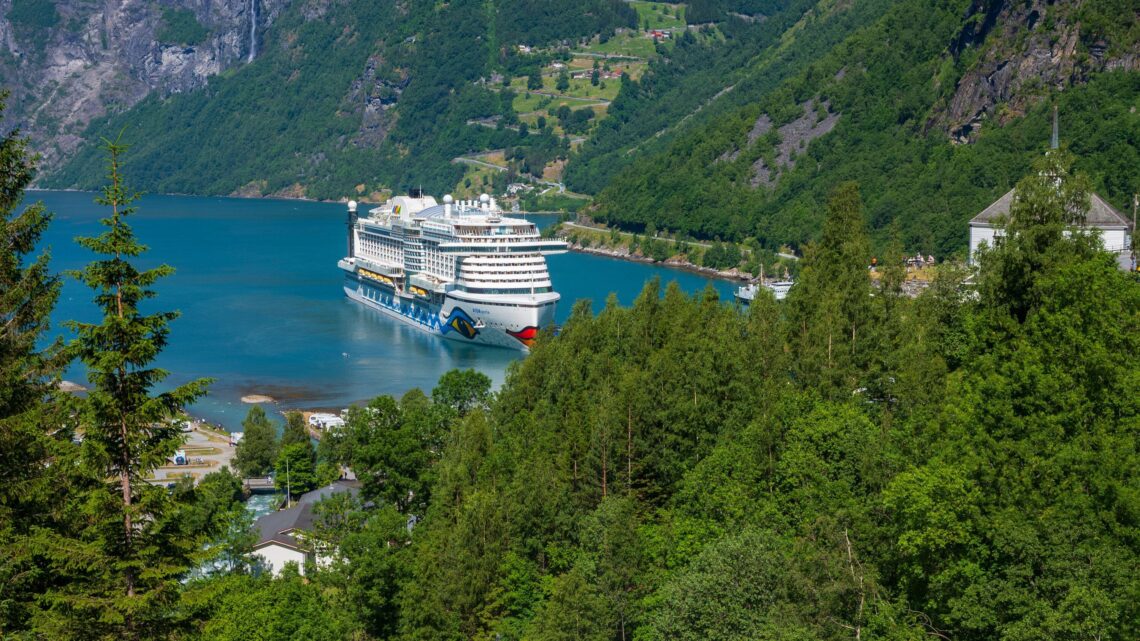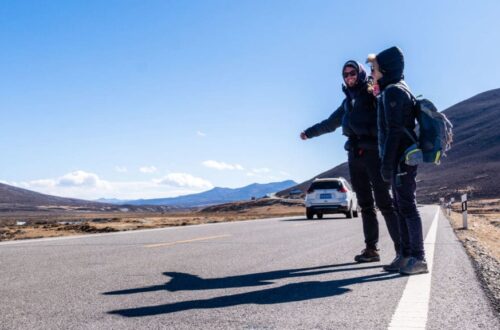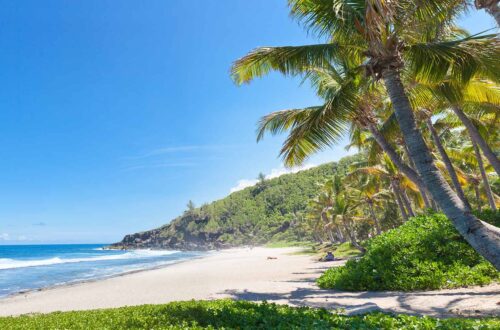The Rise of Coolcations: A New Travel Trend
As global temperatures climb and heatwaves become more frequent, travelers are rethinking their summer plans. Enter “coolcations,” a term coined by Condé Nast Traveler in 2023, describing vacations to cooler climates like Norway, where fjords, forests, and crisp air offer respite from scorching heat. Norway, with its mild summers and stunning landscapes, has become a poster child for this trend. But is this influx of tourists a blessing or a burden for the Land of the Midnight Sun?
Coolcations are reshaping travel preferences, drawing visitors to Norway’s refreshing climate and natural beauty, but they’re also sparking concerns about sustainability and overtourism.
What Are Coolcations, and Why Norway?
Defining the Coolcation Trend
A coolcation is a vacation prioritizing cooler temperatures, outdoor adventures, and sustainable experiences over traditional sun-soaked beach getaways. Norway’s fjords, northern lights, and mild summers (typically 10-24°C) make it a prime destination. Travelers from hotter regions, like Spain or India, are flocking to places like Tromsø and Lofoten for relief and unique experiences.
This trend reflects a broader shift toward eco-conscious travel, with Norway’s pristine landscapes and green infrastructure appealing to those seeking balance and well-being.
Norway’s Natural Allure
Norway’s appeal lies in its dramatic scenery—think towering fjords, cascading waterfalls, and the ethereal glow of the midnight sun. Destinations like Geiranger and the Lofoten Islands offer kayaking, hiking, and cultural experiences, all in comfortable weather. Unlike crowded Mediterranean resorts, Norway promises tranquility and space, aligning with the “hygge” and “lagom” philosophies of coziness and balance.
From glacial hikes to fjord cruises, Norway’s diverse offerings cater to adventurers and relaxation-seekers alike, making it a coolcation haven.
The Boom in Norwegian Tourism
Record-Breaking Visitor Numbers
In 2024, Norway saw a record 16.7 million overnight stays during the summer months, fueled by coolcationers from countries like Spain, India, and Germany. Scandinavian airline SAS reported a 38% increase in bookings from southern Europe to Stavanger and a 52% jump to Kristiansand. This surge reflects a broader trend: 28% of European travelers now seek cooler destinations to escape extreme heat.
The influx of tourists is boosting local economies, but it’s also testing Norway’s capacity to manage crowds sustainably.
Who’s Coming to Norway?
The coolcation trend is driven by two key groups: baby boomers with disposable income and young, first-time travelers aged 18-35 seeking unique experiences. For instance, two women from India visiting Sommarøy described the cool weather as “incredible” compared to their homeland’s scorching heat. This demographic shift is diversifying Norway’s visitor base, bringing new cultural exchanges.
These travelers aren’t just chasing cool weather—they’re seeking authentic, nature-based adventures that Norway delivers in spades.
The Impact on Norway’s Environment and Communities
Pressure on Pristine Landscapes
Norway’s natural beauty is its biggest draw, but it’s also its most vulnerable asset. Popular sites like the Geiranger Fjord and Lofoten Islands are seeing unprecedented foot traffic. For example, hikers in Geiranger have reported trails “clogged like ants” when cruise ships arrive, straining fragile ecosystems. The Norwegian Tourist Association has raised concerns about waste management and trail erosion in these areas.
While tourism brings revenue, it risks degrading the very landscapes that attract visitors, prompting calls for stricter environmental regulations.
Overtourism in Rural Areas
Unlike urban centers like Oslo or Bergen, rural areas like Lofoten and Tromsø lack the infrastructure to handle large crowds. Synnove Solemdal, director of the Sunnmore branch of the Norwegian Tourist Association, notes that these regions face challenges with traffic congestion, emergency vehicle access, and environmental impact from cruise tourism. Locals worry about losing the serenity that defines these places.
Rural communities are feeling the strain of coolcation crowds, highlighting the need for better tourism management.
Economic Benefits vs. Local Strain
Tourism is a significant economic driver, especially in remote areas like Finnmark and Valdres. Seasonal activities like fjord cruises and northern lights tours generate substantial revenue. However, locals in places like Alesund are advocating for tourism that benefits both visitors and residents. Initiatives like a new sauna in Alesund, used by both groups, aim to foster harmony.
The economic boost is undeniable, but without careful planning, it could come at the cost of local quality of life.
Norway’s Response to the Coolcation Surge
Proposed Tourism Tax
To address overtourism, Norway plans to introduce a 3% tourism tax on overnight stays by summer 2025. This optional levy, managed by local authorities, will fund infrastructure like hiking trails and public restrooms. However, critics argue it misses the mark by not targeting day-trippers or cruise passengers, who often contribute to congestion without staying overnight.
The tax aims to balance tourism’s benefits and burdens, but its effectiveness remains under debate.
Sustainable Tourism Initiatives
Norway is a leader in sustainable tourism, with eco-certified accommodations and electric public transport. Cities like Bergen emphasize green travel, while rural areas promote off-season visits to distribute tourist traffic. For example, the new visitor center at Haukland Beach in Lofoten aims to enhance experiences while preserving the landscape.
These initiatives reflect Norway’s commitment to protecting its natural and cultural heritage amid growing visitor numbers.
Spreading Tourism Across Seasons
Experts like Hedda Skoug, CEO of Hurtigruten, advocate for year-round tourism to reduce pressure on peak summer months. By promoting northern lights tours in winter and shoulder-season hiking in September, Norway aims to spread visitors across the calendar. This approach not only eases congestion but also showcases Norway’s year-round appeal.
Encouraging off-season travel could be key to sustainable coolcations, ensuring Norway remains a haven for all.
Comparing Coolcation Impacts: Norway vs. Other Nordic Countries
| Aspect | Norway | Sweden | Finland |
|---|---|---|---|
| Main Attractions | Fjords, northern lights, midnight sun | Archipelagos, forests, sustainable cities | Lakes, saunas, Arctic adventures |
| Tourism Growth | 16.7M overnight stays in 2024, 38% booking increase to Stavanger | Growing interest in Stockholm and Lapland | Surge in bookings for Helsinki and Lapland |
| Challenges | Overtourism in rural areas, trail erosion | Strain on urban infrastructure in Stockholm | Pressure on remote national parks |
| Sustainability Efforts | 3% tourism tax, eco-certified lodging, off-season promotion | Green public transport, eco-tourism focus | Sustainable infrastructure, eco-friendly accommodations |
Norway faces unique challenges due to its rural tourism hotspots, but its sustainability efforts align with broader Nordic trends.
Pros and Cons of Coolcations in Norway
Pros
- Economic Boost: Tourism revenue supports local businesses, especially in rural areas.
- Cultural Exchange: Diverse visitors bring global perspectives, enriching local communities.
- Sustainable Appeal: Norway’s green infrastructure aligns with eco-conscious travel trends.
- Year-Round Potential: Off-season attractions like northern lights diversify tourism.
Cons
- Environmental Strain: Overcrowded trails and fjords risk ecological damage.
- Infrastructure Gaps: Rural areas struggle to accommodate large crowds.
- Local Disruption: Congestion and noise can erode the quality of life for residents.
- Tax Controversy: The proposed tourism tax may not address all overtourism issues.
Coolcations offer significant benefits but require careful management to avoid long-term harm.
Personal Stories: The Coolcation Experience
Last summer, I joined a group of friends for a coolcation in Norway’s Lofoten Islands. We hiked to Kvalvika Beach under the midnight sun, the sky glowing gold at 2 a.m. It felt like stepping into a painting—until a cruise ship docked, and the trail filled with selfie sticks. Our local guide, Erik, shared how the influx of visitors has strained their small community, yet the revenue helps maintain trails. His story underscored the delicate balance Norway must strike.
Personal experiences like these highlight both the magic of coolcations and the challenges they pose for locals.
People Also Ask (PAA)
What is a coolcation?
A coolcation is a vacation to a cooler climate, prioritizing outdoor activities and sustainable travel over traditional hot-weather destinations. Norway’s fjords and mild summers make it a top choice.
Why is Norway popular for coolcations?
Norway’s cool temperatures, stunning landscapes, and eco-friendly infrastructure attract travelers escaping heatwaves. Activities like fjord kayaking and northern lights tours add to its appeal.
How is overtourism affecting Norway?
Overtourism strains rural areas like Lofoten, causing trail erosion, traffic congestion, and waste management issues. Norway is responding with taxes and sustainable initiatives.
Where can I book a coolcation in Norway?
VisitNorway.com and FjordTravel.no offer curated coolcation packages, including fjord cruises and northern lights tours. Booking early ensures availability during peak seasons.
What are the best sustainable travel options in Norway?
Eco-certified hotels, electric public transport, and off-season tours promote sustainable travel. Look for Green Key or EarthCheck certifications when booking accommodations.
Navigating Norway’s Coolcation Future
Balancing Growth and Preservation
Norway’s coolcation boom is a double-edged sword. The economic benefits are clear, but the environmental and social costs are mounting. By investing in sustainable infrastructure and promoting off-season travel, Norway can protect its landscapes while welcoming visitors. Travelers, too, can play a role by choosing eco-friendly options and respecting local communities.
Sustainable tourism requires collaboration between visitors, locals, and policymakers to preserve Norway’s natural beauty.
Where to Book Your Coolcation
For those eager to experience Norway’s coolcation magic, reputable platforms like VisitNorway.com and 50DegreesNorth.com offer tailored itineraries. From fjord kayaking to northern lights cruises, these sites provide comprehensive guides and booking options. For budget-conscious travelers, the weak Norwegian krone makes 2025 an affordable time to visit.
Planning ahead and choosing sustainable operators ensures a memorable and responsible coolcation.
Best Tools for Planning Your Trip
- VisitNorway.com: Official travel guide with itineraries and insider tips.
- FjordTravel.no: Specializes in coolcation packages, including fjord cruises.
- Green Key: Directory of eco-certified accommodations for sustainable stays.
- Skyscanner: Finds affordable flights to Norway, especially with SAS’s new routes.
These tools simplify planning while aligning with Norway’s sustainable tourism goals.
FAQ
Is Norway expensive for a coolcation?
While Norway has a reputation for high costs, the weak Norwegian krone in 2025 makes it more affordable. Budget-friendly options like eco-lodges and off-season tours help manage expenses.
When is the best time for a coolcation in Norway?
May to September offers mild weather (10-24°C) and extended daylight, ideal for hiking and fjord cruises. September is a shoulder season with fewer crowds and emerging northern lights.
How can I travel sustainably in Norway?
Choose eco-certified accommodations, use electric public transport, and visit during off-peak seasons. Supporting local businesses and respecting trails minimizes your environmental impact.
Are coolcations only for summer?
No, coolcations are year-round in Norway. Summer offers midnight sun adventures, while winter brings northern lights and skiing, spreading tourism across seasons.
What activities are best for a Norwegian coolcation?
Fjord kayaking, hiking, northern lights tours, and city breaks in Oslo or Bergen are top choices. Saunas and glacial dips add unique, refreshing experiences.
Conclusion: A Cool Future for Norway?
Norway’s coolcation boom reflects a global shift toward sustainable, nature-focused travel. Yet, the surge in visitors is testing the country’s capacity to preserve its landscapes and communities. By embracing innovative solutions like tourism taxes and off-season promotion, Norway can lead the way in responsible tourism. For travelers, a coolcation offers not just relief from heat but a chance to connect with nature and culture in a meaningful way. So, pack your layers, book that fjord cruise, and discover why Norway’s cool vibes are worth the trip—just tread lightly.
As Norway navigates this trend, the world watches to see if it can balance tourism’s benefits with its cherished natural heritage.




